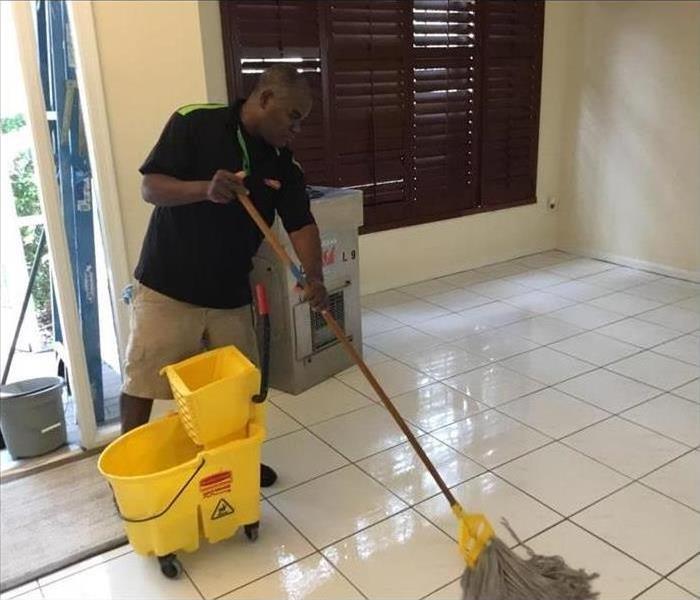What to Do After Flooding
8/10/2020 (Permalink)
Water Cleanup Process
Flooding, whether from plumbing, weather or other causes, can wreak havoc on your Mission Bay, FL, home. Fortunately, acting quickly can mitigate further damage. The following steps outline the water cleanup process.
1. Assess the damage. When dealing with water damage, first take stock of the damage. Make sure it is safe to return to the property. You may need to call an electrician to turn off the power. Contact your insurance agent and follow any specific instructions given for documenting the damage. If flood damage occurred over a large area, the company may be busy and you may not have time to wait for an adjuster to come to your home. Be sure to take detailed photo or video evidence to help the company process your claim.
2. Remove standing water. Mold growth can begin within 24 hours, so it is important to dry out the property as soon as possible. Remove standing water using pumps or specialized vacuums. You can scoop out the water using buckets if you need to.
3. Dry remaining water. After the standing water has been removed, there will still be moisture within porous items. Dry these out using dehumidifiers and fans. If the humidity outdoors is low enough, you can open the windows and doors to increase airflow.
4. Clean affected areas. Flooding often results in bacterial contamination. The source of the water and the item being cleaned will determine the best cleaner for you to use. Anything that cannot be fully cleaned and dried should be thrown away.
5. Repair and replace damaged items. Some repairs you may be able to do yourself. Delicate items like antiques and electronics may need to be professionally restored.
Cleaning up flood damage can be overwhelming. Fortunately, if your home experiences flooding, an experienced restoration company can help you get your home back to normal quickly and safely.





 24/7 Emergency Service
24/7 Emergency Service
